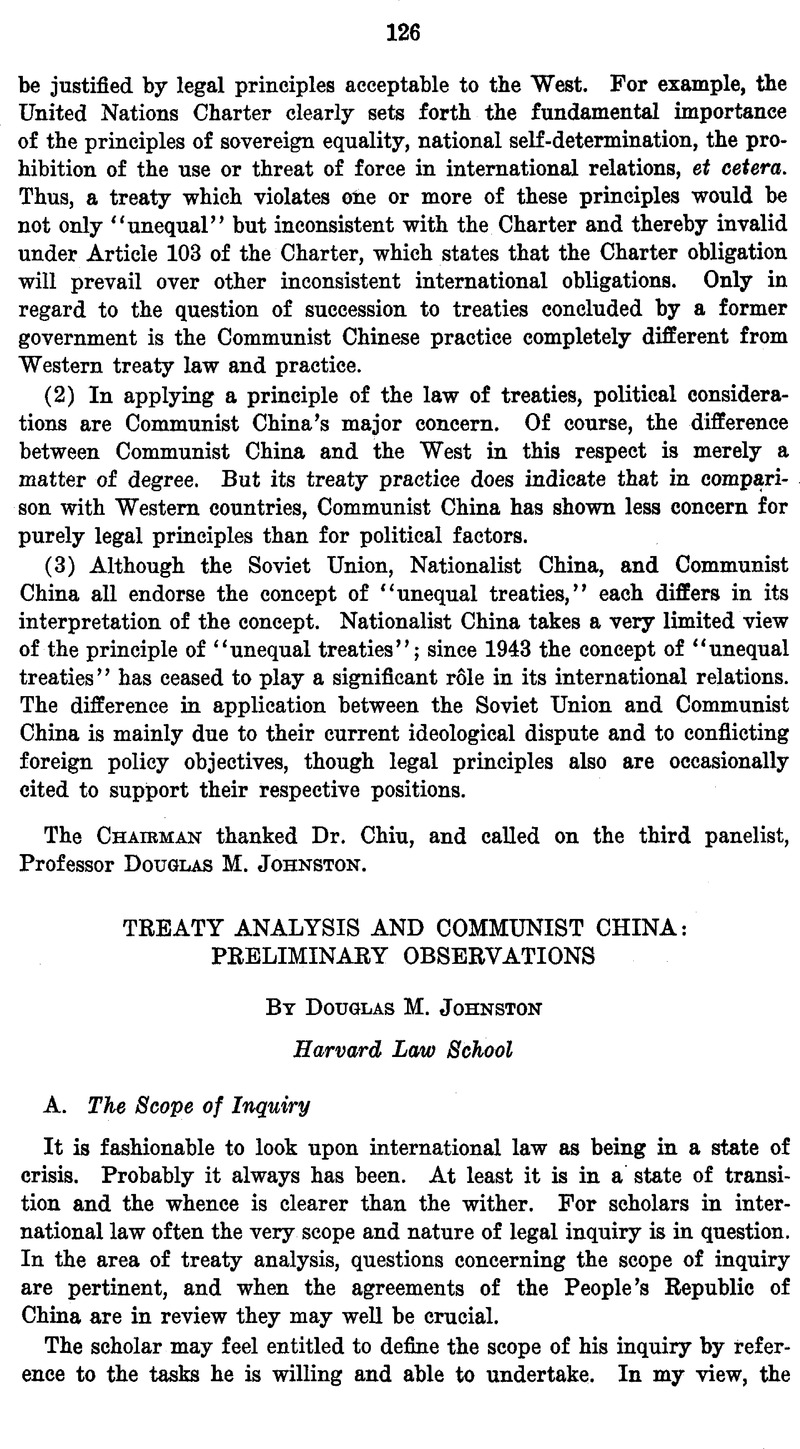No CrossRef data available.
Published online by Cambridge University Press: 27 February 2017

1 In the period from Oct. 1, 1966, to March 31, 1967, the New China News Agency seems to have reported only 23 new agreements. If this figure is reliable, it represents a spectacular decline in the volume of treaty-making by the PEC, down to the level of 1952 or lower. But the flow of official agreements during the first year of the Cultural Eevolution was extremely erratic, and similar fluctuations might be expected during the second year as long as governmental instability continues.
2 K. E. Boulding, "Learning and Reality-Testing Process in the International System," 21 Journal of International Affairs 5 (1967).
3 See, for example, Sino-Malo Joint Communique1 of Jan. 21, 1964, in U. 8. Consulate, Hong Kong, Survey China Mainland Press No. 3146, p. 30.